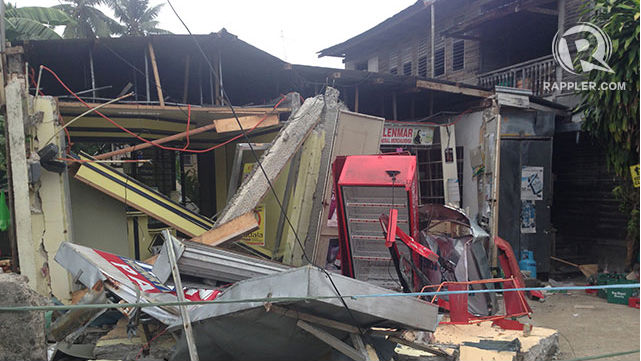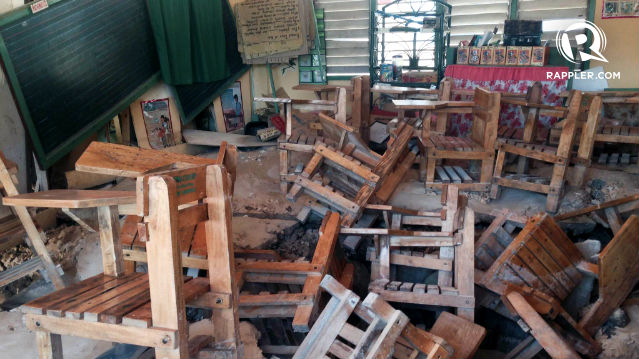SUMMARY
This is AI generated summarization, which may have errors. For context, always refer to the full article.

TAGBILARAN CITY, Philippines – Five days after the earthquake that struck Central Visayas on Tuesday, October 15, the Southern Leyte substation of the Philippine Institute of Volcanology and Seismology (Phivolcs) recorded at least 2,000 aftershocks as of Saturday night, October 20. But in a briefing with national and local officials, Dr Jane Punongbayan of Phivolcs said a thousand more would have been recorded if there was a substation within the area of the hardest hit towns of Bohol.
One of the strongest aftershocks was felt late Friday afternoon in the town of Catigbian.
“It was really a rumbling sound. (I heard) rumbling of roofs. People were crying,” Punongbayan recalled when her team from Phivolcs and the University of the Philippines National Institute of Geological Sciences (UP NIGS) surveyed the town.
“They will be experiencing intensity 2 to 3 earthquakes that they would not mind, but in a day, they will be awaken by an earthquake that’s quite strong. And every several days, there will be a strong earthquake that is capable of bringing down already weakened structures,” Punongbayan explained.
Nearer the region of the epicenter, tremors occur every 10 minutes. They will die off after two to three weeks, according to Phivolcs.
Mainshock reached intensity 8
She added that in the northern towns of Buenavista, Cabangga, and Clarin, the mainshock – the largest earthquake in a sequence of quakes – on Tuesday reached intensity 8 or close to intensity 8, described as “very destructive.”
The strong ground shaking destroyed houses, flattened churches, shattered roads, knocked down bridges, cut off power and communication lines, and isolated towns.
Boholanos say they live in constant fear and feel desperate. But signs of early recovery were reported beginning Saturday. (Read: After Bohol quake: Worry, recovery)
The provincial government and the private sector are slowly restoring infrastructure and communication lines. Commerce is returning to normal.

People and all kinds of transportation can now come in and out of the province by sea or air. All areas are energized although only at the substation level. Cell sites are operational again. The supply of commodities in Tagbilaran City and in at least 9 other towns is generally normal.
After being cut off from the rest of Bohol since Tuesday, the towns of Maribojoc and Loon are now more accessible by land after a bridge was opened Friday night. (Watch: Cry of help from Loon)
On Saturday, Interior and Local Government Secretary Mar Roxas led a convoy – while driving one of the vehicles – that visited the towns of Sagbayan, Clarin, Tubigon, Antiquera, Maribojoc, Catigbian, Balilihan, Corella to check the condition of the roads, bridges, and evacuation centers.
The convoy – that included DSWD Sec Dinky Soliman, Bohol Governor Edgar Chatto, and other local officials – breezed through 250 kilometers of reopened and alternate roads.
The formidable hurdle that officials will face is the situation of evacuation sites in front of destroyed houses, in plazas, and even in rice fields.
Don’t return yet
Across Bohol, at least 34,567 houses were either partially or totally damaged, displacing more than 341,000 people, based on the combined data of the Department of Social Welfare and Development (DSWD) and the Provincial Disaster Risk Reduction and Management Council (PDRRMC) as of Saturday night, Oct 19.
Phivolcs advised affected people not to enter heavily damaged structures or houses and to avoid areas that appear vulnerable to landslides.
Punongbayan said those who live in houses, which are slightly cracked, should seek help from the municipal engineers and have them checked. – Rappler.com
Add a comment
How does this make you feel?
There are no comments yet. Add your comment to start the conversation.